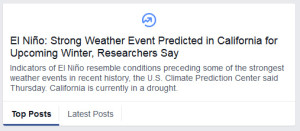 You’ve seen the head lines. “Strongest El Niño On Record May Be Brewing In The Pacific“, “El Niño weather event is biggest since 1997, may trigger soaking winter storms“, or “Drought to deluge? El Nino’s impact on California“.
You’ve seen the head lines. “Strongest El Niño On Record May Be Brewing In The Pacific“, “El Niño weather event is biggest since 1997, may trigger soaking winter storms“, or “Drought to deluge? El Nino’s impact on California“.
The “best management practice to reduce stormwater runoff” is rainwater harvesting. It is small-scale, but it works.
If this all holds true, then what can we as Californian’s do now to help our chances of saving all that rainwater and putting it back into the water table or the underground “savings accounts” when it does fall?
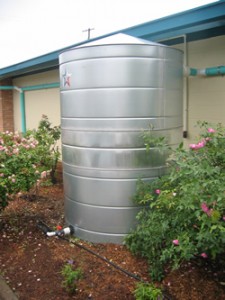
Source: rainwaterharvesting.tamu.edu/
First, lets look to our peers around the globe.
Australia
In Australia, a place that just went through an 11 year drought where “the Federal Government provided $4.5 billion in drought assistance“, they have become pioneers on the forefront of drought and rainwater harvesting and capture. We should observe and implement the changes they made as a society and implement them here.
A quick Google search shows the “Rainwater Harvesting Association of Australia” has created a “Rainwater Tank Design and Installation” handbook which is used all across Australia. This group is made up of plumbers in Australia who found ways to survive a very long drought and do so by capturing, storing and re-using the free rain that fell from the sky.
Melbourne Water in Melbourne, Australia has a section on their website about “Protect the Environment” entitled ‘Raingardens‘. There they talk about the benefits of building a raingarden – such as helping to filter storm water run-off, reducing the rate and amount of water entering creeks and rivers and ways to aid with healthy waterways. Plus, a rain garden will slow the water runoff rate which is key to getting the water back into the ground.
They have created a quick 3 minute video on building a rain garden in your backyard, something you should do to help. Notice how the plants they have planted are very similar to the ones we are planting when we remove our lawns?
Israel
Israel is a country in a dry climate and drought conditions are common, especially in the last decade. The Jerusalem Foundation created a “Rain Water Harvesting in Schools” program which educated our youth on water conservation and the importance of reducing dependency on municipal water systems, especially during winter months.
With a few polycarbonate tanks installed at each school, they were able to capture 1.3 million liters of water (or 343,423 US gallons) since the beginning of their program. At one school in their program, a ancient well was found and rainwater was plumbed to the well, further expanding their storage resources. This water was then used for irrigation and restroom needs. You can read their full report here: http://www.jerusalemfoundation.org/media/50262/Water-Harvest-Report.pdf
Texas / Oklahoma
Texas is no stranger to limited rainfall, it was the Lone Star state that I first saw a video of rainwater harvesting. Billy Kniffen spells out all options of rainwater capture in this 13 minute video that anyone can do at their home. Billy says in his video that they can survive on less than 9″ of rainfall per year. See the video below:
There are hundreds of rainwater harvesting videos on Youtube worthy of your time. https://www.youtube.com/results?search_query=rainwater+harvesting
The Austin Statesman also did an article based upon the information from the video Drought drives rainwater collection in Texas.
Whats the point?
The point is, if we’re spending all this time, money and energy to move recycled water now, why not spend the same time, money and energy at home to capture rainwater where and when it falls to use on our own properties.
At first I re-used some 5 gallon storage bins – as seen in the picture. Proof that lots of rain falls and its worth saving. Then I set up 2 – 32 gallon trash cans to capture rain off a 30′ x 8′ roof. In a quick 5 minute downpour, both barrels will be full. Those 64 gallons of water will last about 2 months when I water some select pots in the backyard.
The last rain storm we had on June 10th, gave me 47 gallons, slightly less than normal, but still a lot of water considering I got it for free. Setting up barrels under a gutter is very easy, anyone can do it.
Tips to capture your own rain water
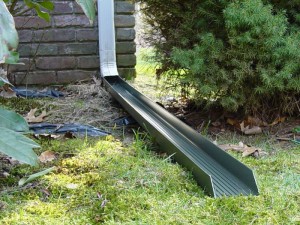 First – unhook your downspouts from your drainage lines and hook up corrugated piping or downspout extensions to let the water go to the ground and not straight to the street. Ensure the water is at least 5 (used to be 10 per 2010 California Building Codes) feet away from your foundation. This is exactly what I did with the installation of my swale.
First – unhook your downspouts from your drainage lines and hook up corrugated piping or downspout extensions to let the water go to the ground and not straight to the street. Ensure the water is at least 5 (used to be 10 per 2010 California Building Codes) feet away from your foundation. This is exactly what I did with the installation of my swale.
Second – re-use those 275 gallons totes or 55 gallon drums by hooking them up to your downspouts to capture the rainwater on your roof. Provide a place for the water to overflow to, such as the point made above. Buy more totes or barrels if you need to.
The great part about rainwater versus recycled water – rainwater shouldn’t cause algae build up in your storage tank. Rainwater is the best most natural form of water available. Save it for a sunny day when you can. My rain barrels never turned green, but I did add a mosquito killer to the water to stop larvae from forming.
Third – create a swale , bioswale, or rain garden. All of these are virtually the same, except a bioswales usually have “native vegetation which are used to collect, filter, and direct rainwater . This is a natural way to collect excessive rainfall and filter it before it enters the drainage systems.” Rain gardens are very similar to bioswales, but can be in a raised bed form.
We are starting to see many more installations of bio-swales around California like as mentioned in “Stormwater Capture: California’s Untapped Supply” and in Downtown Kirkland in Washington. Look at new and re-modeled shopping centers, they should have something similar installed.
In the newer State of California Building Code’s (2010 CALGreen Residential Page 57 “Section A4.106.3 ‘Water Permeable Surfaces’), providing a permeable surface or place for stormwater to go so it reaches the ground is a requirement.
An example of pervious concrete is shown here at the UNH Stormwater Center:
The shopping plaza down the street from me has installed run-off places in the parking lot so the water flows to the ground first. If water levels rise about 10″ above the ground level, it will then overflow to the storm drains. This is huge! We should enact the same policies at our homes.
At American Soil & Stone in Richmond, California – they have setup a rainwater catchment device connected to one of their buildings. The water is then used for an auto-refill for their fish pond.
This is just the first post of many, but it should get the ball rolling for ideas of when we see “drought ending rainfall” news headlines, we should also prepare for ways to capture it since it might not be a severe as they say it will be.

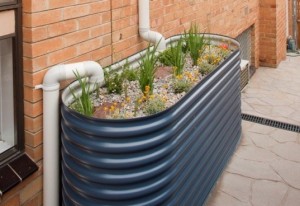
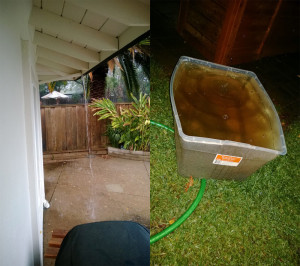
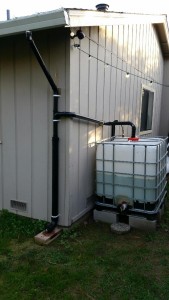
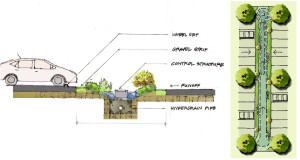
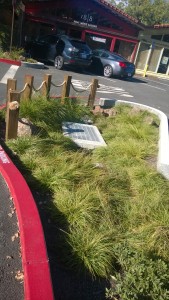
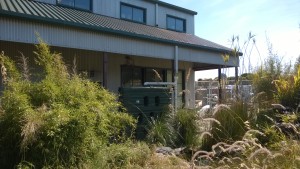
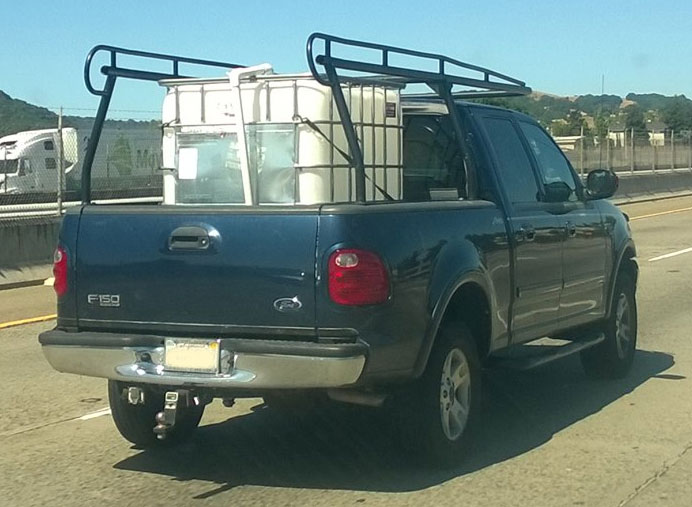
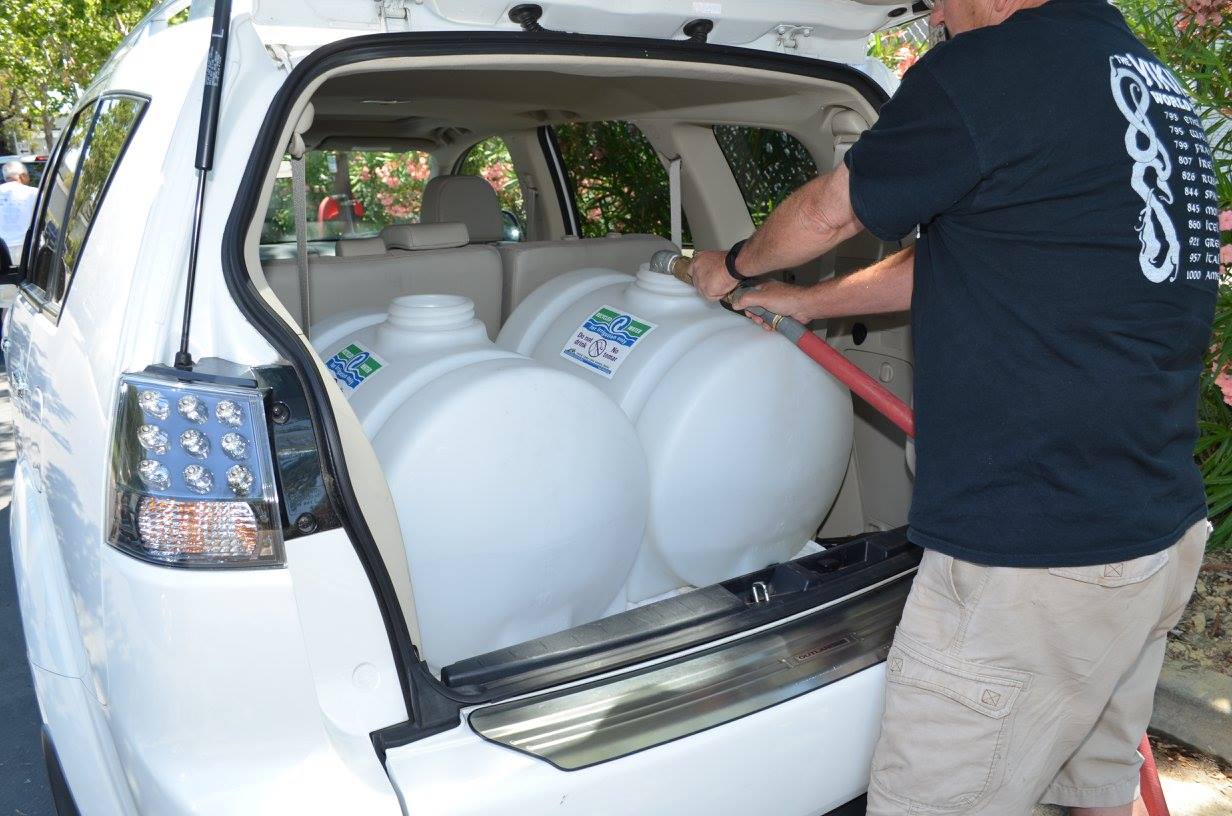
Like the references to Australia. More can be done. Rooftop water nationally is 1.5B cub m/yr and is 117% of consumption. Solutions are available ninaccesspathway.com
Let’s push the solutions and include America, “Dig Once”, save water, save money
John